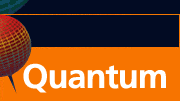CONTACTS
- Coordinator
Adolfo del Campo
-
Quantum Lunch Location:
T-Division Conference Room, TA-3,
Building 123, Room 121
 |


Quantum Institute: Visitor Schedule
The Quantum Lunch is regularly held on Thursdays in the Theoretical Division Conference Room, TA-3, Building 123, Room 121.
The organizing committee includes Malcolm Boshier (P-21), Adolfo del Campo (T-4 & CNLS), Michael Di Rosa (C-PCS), Armin Rahmanisisan (T-4 & CNLS), Changhyun Ryu (P-21) , Nikolai Sinitsyn (T-4), Rolando Somma (T-4), Christopher Ticknor (T-1), and Wojciech Zurek (T-4).
For more information, or to nominate a speaker, contact Adolfo del Campo.
To add your name to the Quantum Lunch email list, contact Ellie Vigil.
Thursday June 19, 2014
12:30 PM - 2:00 PM
Speaker: Alexey Gorshkov (National Institute of Standards and Technology)
Technical Host: Dibyendu Roy
TOPIC: Harnessing Quantum Systems with Long-Range Interactions
Abstract
AMO (atomic, molecular, and optical) systems with long-range interactions, such as Rydberg atoms, polar molecules, and ions, are arguably the most controllable, tunable, and strongly interacting quantum systems. In this talk, we will begin by reviewing how precise control over such systems has recently opened a new paradigm for quantum computing and communication, entanglement generation, and engineering of new phases of matter. We will then focus on two topics. First, we will discuss our theoretical [1] and experimental [2] work on a medium, in which strong long-range interactions between Rydberg atoms is mapped onto strong interactions between photons. This work paves the way for the generation of a variety of nonclassical states of light, the implementation of photon-photon quantum gates, and the study of many-body phenomena with strongly correlated photons. Second, we will discuss our theoretical [3] and experimental (in an ion chain) [4] work on the bounds to how fast information can propagation in lattice systems with long-range interactions. In particular, the new bound that we derive [3] is expected to provide crucial insights into numerous equilibrium and non-equilibrium phenomena, including the generation of entanglement and topological order and the decay of correlations in gapped ground states.
[1] AVG et al, Phys. Rev. Lett. 107, 133602 (2011); AVG et al, Phys. Rev. Lett. 110, 153601 (2013); Bienias et al, arXiv:1402.7333.
[2] Peyronel et al, Nature 488, 57 (2012); Firstenberg et al, Nature 502, 71 (2013).
[3] Gong et al, arXiv:1401.6174.
[4] Richerme et al, arXiv:1401.5088, Nature, in press. |


